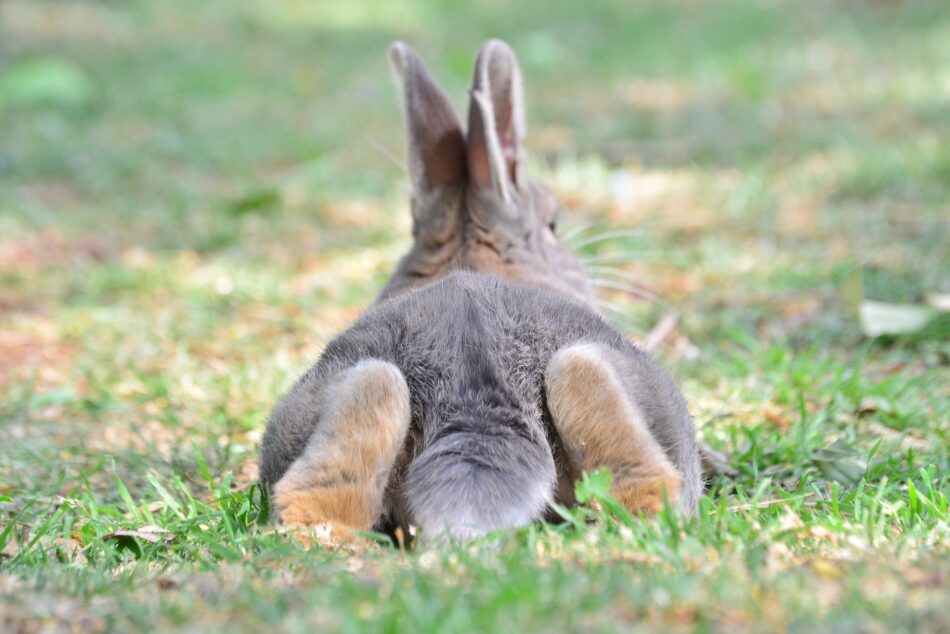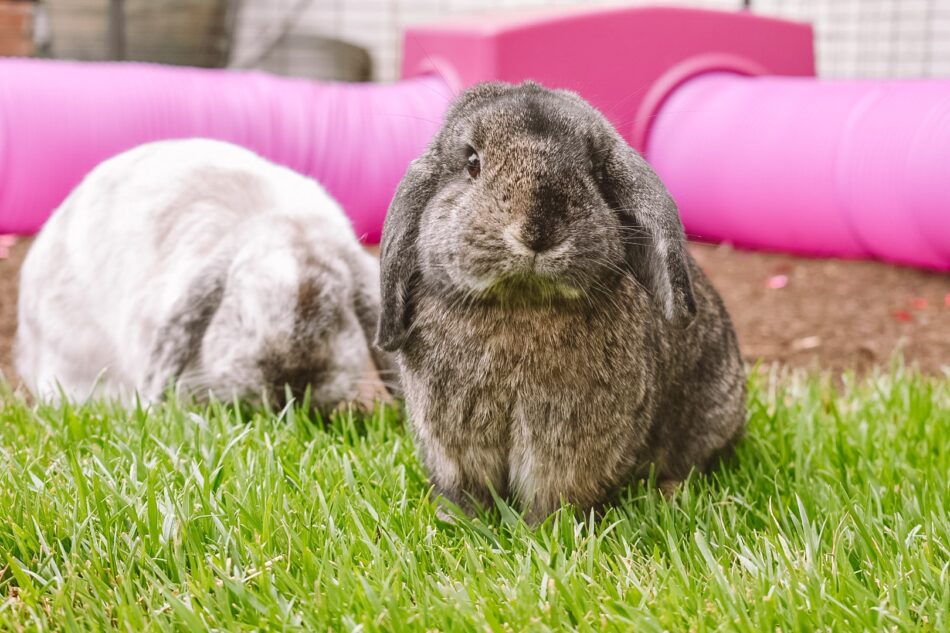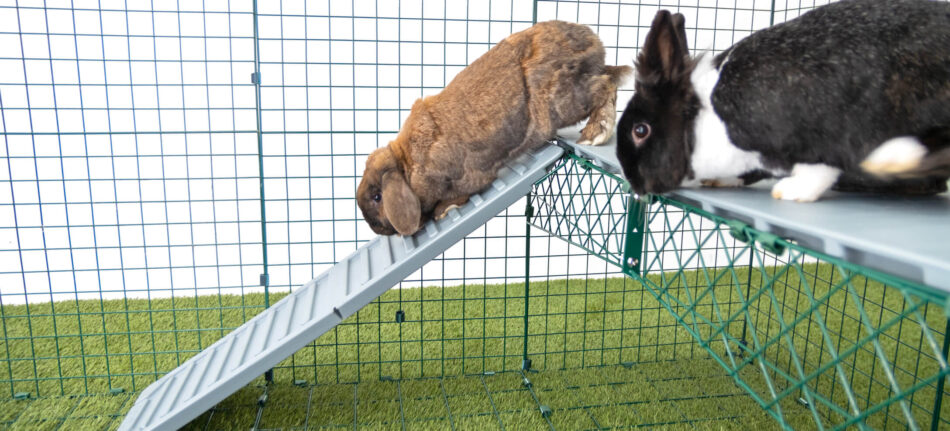How to Read Rabbit Body Language
Cats and dogs (and humans) make noises to show others how they feel, want or don’t like. Rabbits do as well, but they mainly use body language to communicate with other rabbits, and with us. You will most likely be unable to understand everything your rabbit is trying to tell you, but by learning a few things about rabbit body language, you’ll be able to make life a little bit better for your pet.
Loss of postures and vocalizations can mean several things depending on the situation and can differ somewhat from rabbit to rabbit. It is therefore important to be able to take in accompanying signals that help you see what’s going on. Here’s how you can read the body language of a rabbit.
Your rabbit’s ear and nose
Rabbits use their ears to tune into what’s going on around them, and they can often be used as signals and are good indicators of how your rabbit is feeling. If the ears are stood up and are twitching, your rabbit is listening for something. If they are confident, it’s not dangerous, or not particularly interesting, they might only raise one ear. When they are relaxed, the ears will rest against the body, normally along the back. Find out more about your rabbit’s ears and how to take care of them in the How To Clean A Rabbit’s Ears Omlet guide!
The nose is also a good indicator of how the rabbit is feeling and how interested they are in what is going on around them. The faster the wiggling of the nose, the more attentive or agitated the rabbit is.
Happy rabbit body language
Fully closed eyes
Rabbits have very expressive eyes, and as they are prey animals, they will only fully close them when they are extremely comfortable and feel completely safe. So if you find your rabbits sleeping with their eyes closed, it is a clear sign that they feel at home.
The bunny flop
Your rabbit is rolling on its back with its legs in the air! This is a sign that the rabbit is really happy and relaxed, and the movement can sometimes be combined with a binky, which means that the bunny is running around and dancing madly, often jumping up in the air out of pure happiness.
Belly on the ground
The rabbit is lying on its belly with legs stretched out behind or maybe to the side of the body, with the head either up or resting on the ground. The rabbit is resting and is relaxed. The further the legs are stretched behind the body, the more comfortable the rabbit is.

Rabbit bonding body language
If the rabbit is grooming itself when you are around it can be seen as a sign that your floppy-eared friend trusts you. Rabbits are prey animals and will never take their eyes off what they think might be an intruder.
Circling
Sometimes the rabbit starts running around your feet when you’re in the run with him or her. This is a mating ritual, and a sign that your rabbit is in love with you.
Nose rubbing
Rabbits tend to rub their noses in a way to show affection, so if you find your rabbit rubbing their nose on you it’s a sign that they really like you. If they also throw in a little lick, you’re properly loved! Discover more about How Rabbits Show Love and Affection in our previous blog.
Territorial body language
Rubbing scent glands
If you have a new hutch or run, the rabbit will have to make sure that its territory is marked. Rabbits do this by rubbing scent glands on their necks against objects, spraying urine and scattering their droppings around the place. This behaviour normally stops once the rabbit feels at home.
Stressed rabbit body language
Eyes wide open combined with fluffed up fur and growling indicate fear. The rabbit’s inner eyelids might also protrude and become visible if he or she is uncomfortable.
Other common rabbit body language
The classic
Rabbit is sat with weight on the bottom, forelegs straightened and ears standing up. Your rabbit is checking to see what’s going on (p.s. – the Zippi Rabbit Platforms for Zippi Runs provide bunnies with the perfect view of what’s happening in their backyard!).
Head on the ground
If the rabbit rests its head on the ground, he or she is showing submission, and might want to be petted or groomed. In different circumstances it can also mean that they want to be left alone, so make sure to take in other signals.
The ball
Rabbit is sat rolled up with legs tucked, normally with ears resting against the body. They are sleeping or napping. Rabbits can sleep with their eyes open but prefer to keep them closed if they feel comfortable and safe enough.
Nose nudge
This can either mean “leave me alone” or “you’re in my way”. It is however also a sign of trust, as you’re not seen as a threat to the rabbit.
Nest building
If you notice that your female rabbit starts pulling out hair from their fur and collects hay in a specific place in the hutch, it’s likely that she is building a nest. Rabbits sometimes have false pregnancies, but if you think that there is a possibility that your rabbit might be pregnant, it’s worth contacting your vet.
Sounds
Whilst rabbits mostly use body language to tell us how they’re feeling, our floppy-eared friends also communicate via sound. Rabbits are relatively quiet animals, but they do make a few noises that you’ll be able to differentiate from each other. Here are a few of them:
Growling
A short barking growl is a sign of aggression, and indicates that you, or something else close by, is threatening the rabbit.
Screaming
If the rabbit lets out loud, piercing screams they’re likely to be very scared or experiencing a lot of pain.
Low grunting and grinding of teeth
This is the rabbit equivalent of a cat’s purring and means that the rabbit is content and relaxed.
Loud teeth grinding and chattering
If the grinding however changes into louder teeth chattering, the rabbit is most likely in a lot of pain.
Thumping
Rabbits drum their feet against the ground when they are afraid or threatened or want to make others aware of what is going on. Thanks to the rabbit’s strong hind legs, this can be surprisingly loud.
Now you can read your rabbit, you can build an even better bond! Shop everything your pet needs in the Omlet Rabbit shop including Caddi Rabbit Treat Holders, Zippi Rabbit Platforms, and more! And if you do notice that your fluffy friend isn’t behaving in their normal manner, or you have any concerns about their body language or general health, do not hesitate to contact your vet.
This entry was posted in Rabbits

